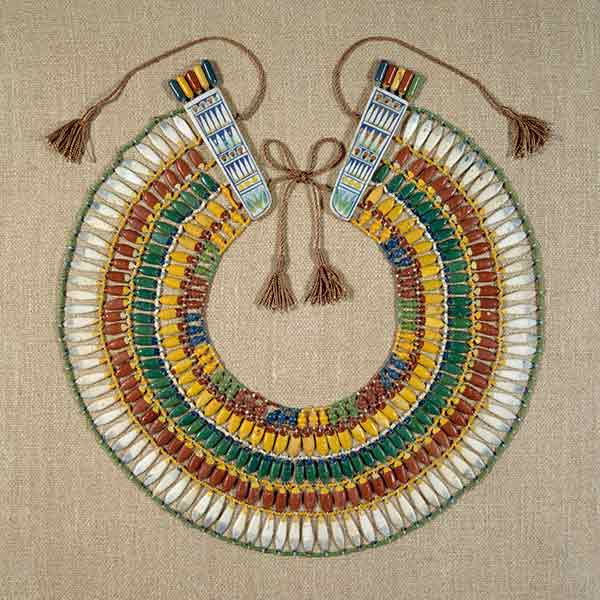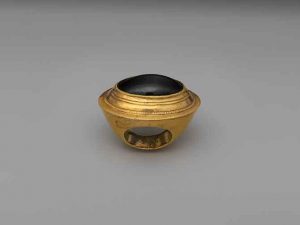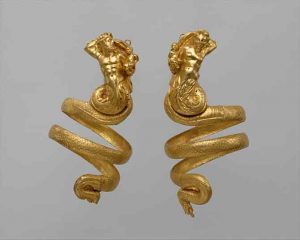
The Metropolitan Museum of Art’s ambitious new exhibition, “Jewelry: The Body Transformed,” opens today. If you’re looking for insights into jewelry that go well beyond its aesthetic appeal, do yourself a favor and get to New York City before the show closes on Feb. 24.
Although I wasn’t able to attend last week’s press preview, I spoke with lead curator Melanie Holcomb a few weeks ago about the ideas she and the curatorial team grappled with as they assembled some 230 objects—from headdresses and rings to sculptures and paintings—that shed light on how human beings have been impacted by jewelry across time and space.
The catalog that accompanies the exhibition is rife with fascinating insights into the deeply meaningful role jewelry has played in our shared humanity. Here are a few teasers to inspire you.
On Jewelry’s Significance
“Adorning the body is, in fact, one of the most complicated and meaningful activities human beings engage in. We use jewelry to quell fears, arouse desire, and provoke admiration. It enables and expresses some of our highest aspirations.” (Holcomb)
On Rings

“You are what you wear, and what is more, it is in the wearing that you become. Its intimate relationship to the body has long given jewelry a special authority in vouching for the identity and integrity of its owners. Although jewelry of all kinds can stand in for the wearer, rings in particular often assume this role. Stories ancient and modern tell of lost children reunited with parents through rings, lost lovers recognized through them, and solemn oaths vouchsafed by them.” (Holcomb)
“As far back as ancient Egypt, the ring’s circularity has been interpreted as a fitting symbol of eternal love; the use of rings in wedding ceremonies also dates to antiquity. In Jewish tradition, the placing of the ring on the bride’s finger marks her consecration to the groom. A large filigree-and-enamel betrothal ring has a hinged bezel in the shape of a gabled roof that opens to reveal the inscription mazel tov (good luck). This architectural feature, found on examples from across Europe, likely symbolizes the couple’s home.” (Consulting curator Hannah Korn)
On Jewelry’s Permanence
“As a statement of taste and a means of projecting aspects of the self onto the larger world, jewelry, like fashion, is an ostentatious art. Yet even the finest textiles of fashionable dress are mere ephemera when compared with jewelry, which is designed to endure.” (Holcomb)
“As humans we live with ghosts, or rather we want to live with them. Jewelry’s perceived durability allows it to stand as a permanent trace of the impermanent body, a material presence for the stubbornly immaterial. This may, in fact, be one of its defining features. Because jewelry can be shared, repurposed, reworked, and passed down, it serves as a potent vehicle of cultural memory and of personal remembrance. It has a way of conjuring the dead, its dazzling form a rebuke to corporeal decay.” (Holcomb)
On Gold

“Early on, societies came to associate certain metals and stones with specific deities or with elements in nature that were thought to reflect the divine. The most universally recognized of such materials was gold. Immutable, extremely malleable, and possessing the color and brilliance of the sun, it was a highly desirable material for jewelry. Several of the earliest civilizations, especially those in Egypt and South America, had easy access to gold, which dominated all types of elite jewelry, but even people in areas without such sources, like the Near East, often went to great lengths to acquire the coveted metal.” (Consulting curators Kim Benzel and Diana Craig Patch)
At top: An Egyptian broad collar made of faience,
- Subscribe to the JCK News Daily
- Subscribe to the JCK Special Report
- Follow JCK on Instagram: @jckmagazine
- Follow JCK on X: @jckmagazine
- Follow JCK on Facebook: @jckmagazine